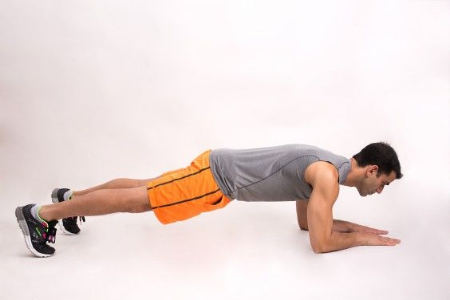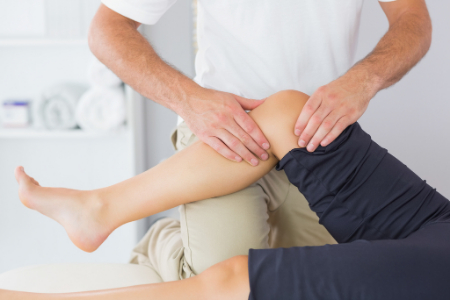Muscle activation is a concept that causes confusion and is also found on the Internet under the title of offering a set of techniques to improve posture and relieve pain. In fact, there are even international training courses and certifications for those who want to work in this fashion.
Muscle autoactivation is the process in which a muscle contracts voluntarily or involuntarily. For example, to perform the plank movement, by holding the body position for a certain period of time, we activate the gluteal and abdominal muscles. But we also have MAT or muscle activation techniques. It is a treatment for neuromuscular disorders that cause pain, weakness, and imbalance.
What is MAT or Muscle Activation Techniques?
In the early 2000s, leading health and fitness expert Greg Raskoff came up with a theory to explain why so many people develop muscle discomfort that cannot be resolved with standard physical therapy techniques. According to him, the effective way was to find the imbalances that explained the pain from another angle.
So he suggested that some patients feel pain on one side of the body because they don’t activate the opposite side enough. This can be due to improper connection between neurons and muscle tissue or inhibited communication between the nervous system and the muscle.
He developed certain techniques to solve what he believed to be a problem. These techniques start with a diagnosis made by the MAT specialist, through which he succeeds in identifying the inactive areas.
Treatment is then aimed at muscle activation of areas that have been “forgotten” by the nervous system. With different approaches, contraction and tension are stimulated in areas that can improve the patient’s quality of life.
Reasons for the problem based on MAT
Summarizing the theory of muscle activation, we can say that there are three ways of causing muscle-neuropain that can be resolved with MAT techniques:
1. Inhibition: The brain is able to inhibit nerve transmission in some neurons that are responsible for activating muscles. Why does it do this? Generally to protect structures or because it detects they are not being used. This may be because there is an injury or repetitive motion that can cause damage, or because a sedentary lifestyle alerts the nervous system that the part is not being used.
2. Weakness: It is possible that you have weak muscles. This means that they are not able to perform the specific function that is related to them. They do not contract with sufficient force required in the anatomical tissue in which they are used or perform the movement we ask of them in an exercise or sport. This weakness causes the brain to activate other nearby or distant muscles to perform the action. This causes damage because the activated tissues are no longer trained for this new function.
3. Imbalance: Muscle imbalance can be caused by the previous two problems. One part of the body grows much faster than the other. Therefore, there are muscles with good tone and strength that overshadow others and do not allow them to be activated. It is as if the weaker part enters a chronic energy saving mode.

Muscle activation techniques
MAT techniques are performed by people who are trained in this field. Depending on the country and current health laws, the professional is sometimes required to be a physiotherapist, while in some places this is not required.
So it can be a specialization in kinesiology or an alternative therapy. In either case, the technician or specialist will perform a preliminary diagnosis to identify restricted, weak, or imbalanced areas. Then he applies MAT techniques.
However, there are also some muscle activation exercises that are useful to do at home. These options serve as a warm-up before starting a more intense workout:
1. Isometric movements
Isometric movements are able to activate muscles while avoiding some of the disadvantages of concentric exercises. Concentric exercises are exercises that shorten muscle fibers against resistance, such as when lifting a dumbbell to your shoulder.
The problem with concentric exercises is that if they are repeated too much, they only strengthen some fibers and leave others unused. As a result, one area of the body becomes stronger, but another area becomes weaker.
Isometric exercises do not change muscle fiber length. That is, the person remains stationary in the contraction and there is no significant movement. This improves neuromuscular balance and is easily applicable if we do isometric planks or static squats.
2. Raise the knee without impact
Before running, runners can do warm-up exercises that activate the entire lower body. One of them is to raise the knees above the level of the pelvis, but without running in place, and return the leg to the starting position without impact.
The secret of this muscle activation is not relaxing to complete the joint arch and lowering with too much pressure. You’re looking to stimulate muscle tissue, not start running. Then, starting to run, the usual muscles will be used.
3. massage
By pressing, we stimulate muscle tissues that may be inhibited. Just touching the inactive muscle mass sends a signal to the brain to contract.
If we are not trained in MAT, it can be difficult to identify which area to touch. However, it’s a good idea to activate areas you rarely use.
If you always do weights at the gym, focus on your upper body, and never run, you can spend a few minutes massaging your glutes, quads, and calves. It’s a way of warning the brain not to turn off those less-used muscles.

Muscle activation techniques (MAT) still work
Muscle activation techniques are not accepted by all health professionals. Therefore, there is still a long way to go and more scientific studies are needed to determine its true scope.
Now, we know that this technique is not the same for children and adults. At a young age, unlike adults, there is a variety of mobility and activities, just as there is usually no weight training to limit restraint or sports injuries.
For older people, it is important to activate the abdominal muscles, which reduces back pain. However, there is research that shows that not everyone will benefit from it and that there should be a personalized version for each person.
For now, always consult a trusted health professional. Start with a physical therapist or trauma doctor who can guide you, diagnose you, and prescribe a MAT session if appropriate.

Frequently asked questions about muscle activation
1. For whom is muscle activation useful?
Muscle activation can benefit a variety of people, including:
• People suffering from muscle or joint pain: MAT can help relieve pain and improve range of motion.
• Athletes: MAT can help improve athletic performance and reduce the risk of injury.
• Seniors: MAT can help maintain muscle strength and balance.
• People with a sedentary lifestyle: MAT can help activate muscles that have weakened due to lack of use.
2. What types of pain can be treated with MAT?
MAT can be helpful for treating many types of pain, including:
Back pain, neck pain, shoulder pain, knee pain, elbow pain, ankle pain
3. How does MAT work?
MAT works by activating muscles that are weak, inhibited or imbalanced. This is done using various techniques such as massage, isometric movements and stretching.
4. What is the difference between MAT and physical therapy?
MAT is a form of physical therapy, but not all physical therapists practice MAT. MAT focuses on muscle activation, while other types of physical therapy may focus on a wider range of treatments, such as strengthening exercises, manual techniques, and training.
5. Is MAT safe?
MAT is generally safe, but some people may experience mild pain or discomfort after treatment. If you are pregnant or have a history of injury or illness, talk to your doctor before starting MAT.
6. How long does it take to see MAT results?
Most people begin to see results within a few weeks of starting MAT. However, it may take longer for some people to fully benefit from MAT.
7. Can MAT be done at home?
Yes, you can do some MAT exercises at home. However, to make sure you are doing the exercises correctly, it is best to consult with a MAT practitioner first.
8. Is MAT a definitive treatment?
MAT is not a definitive cure for any disease. However, it can help relieve pain, improve function, and improve people’s quality of life.
final word
Muscle activation (MAT) is an emerging treatment modality that appears to have significant potential to help people with muscle and joint pain, athletes, the elderly, and sedentary individuals. However, more research is needed to determine the long-term efficacy and safety of MAT. If you are considering trying the MAT, it is important to consult with a qualified professional. They can help you determine if MAT is right for you and create a treatment plan that is right for your needs.





